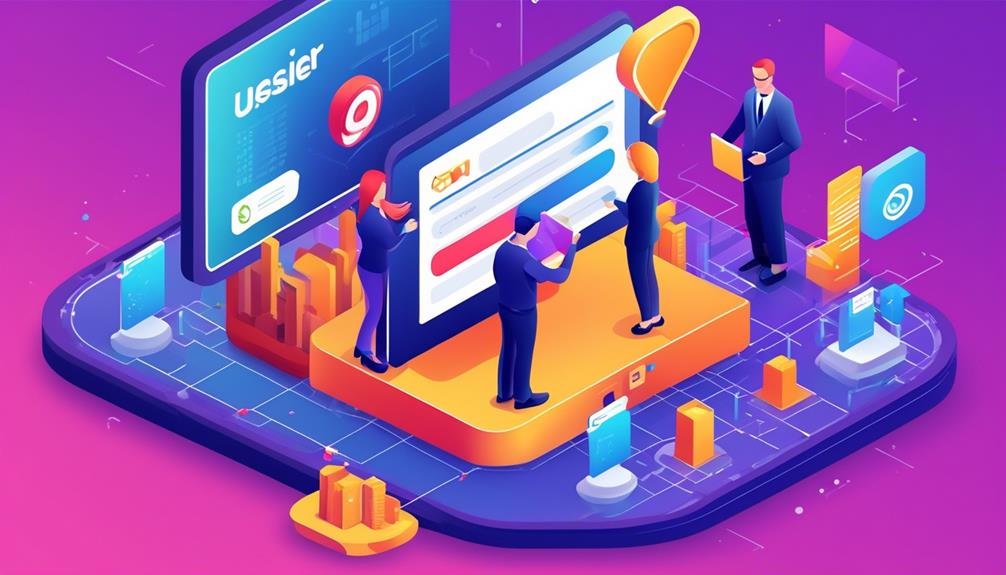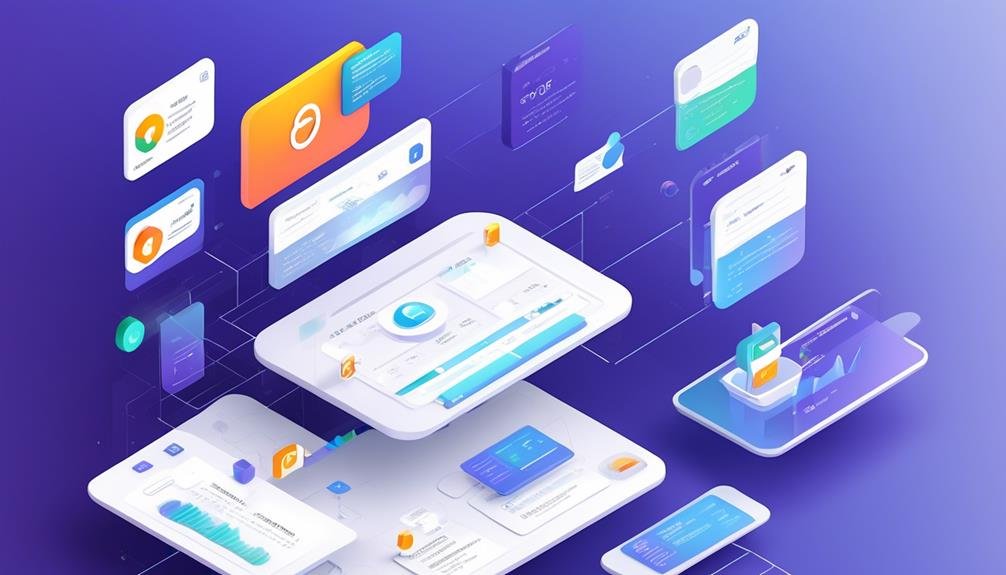Have you ever wondered how you can make your email marketing more effective and personalized? Well, the answer lies in automating your emails based on user behavior.
By tailoring your email content to match the actions and preferences of your users, you can significantly increase engagement and conversion rates.
But how exactly can you achieve this? In this discussion, we will explore the benefits of email automation, the importance of understanding user behavior for personalization, the key user actions that can trigger automated emails, and the tools and platforms that can help you streamline this process.
So, hang on tight as we uncover the secrets to automating emails that truly resonate with your audience.
Key Takeaways
- Email automation saves time and effort by creating and scheduling emails in advance.
- Understanding user behavior allows for personalization of email content based on preferences and actions.
- Identifying key user actions helps trigger automated emails, such as reminder emails or welcome email series.
- Implementing segmentation allows for targeted campaigns and tailored messaging based on shared characteristics.
Benefits of Email Automation
There are several compelling benefits to implementing email automation in your marketing strategy. Firstly, it saves you time and effort. With email automation, you can create and schedule emails in advance, allowing you to focus on other important tasks. No more spending hours manually sending individual emails or worrying about forgetting to follow up with leads.
Secondly, email automation helps you improve engagement with your audience. By setting up triggers and workflows, you can send personalized and relevant emails based on user behavior. This means that your subscribers receive messages that are tailored to their interests and actions, increasing the chances of them opening, reading, and responding to your emails.
Furthermore, email automation allows you to nurture leads more effectively. You can set up automated drip campaigns that deliver a series of targeted emails over time, guiding prospects through the buyer's journey. This helps build relationships, establish trust, and ultimately increase conversion rates.
Lastly, email automation provides valuable analytics and insights. Through tracking and reporting features, you can monitor open rates, click-through rates, and other key metrics. This data allows you to measure the effectiveness of your campaigns and make data-driven decisions to optimize your email marketing strategy.
Understanding User Behavior for Personalization
To personalize your email marketing efforts, it's essential to have a deep understanding of how your users behave. By understanding their preferences, interests, and actions, you can tailor your emails to resonate with them on a personal level. This level of personalization leads to higher engagement and conversion rates.
Start by analyzing your user data. Look at metrics like open rates, click-through rates, and conversion rates to gain insights into your users' behavior. Identify patterns and trends that can inform your email marketing strategy. For example, you may find that certain segments of your audience are more likely to open emails on mobile devices, while others prefer desktop. This information allows you to optimize your emails for different devices and create a seamless user experience.
Another important aspect of understanding user behavior is tracking their interactions with your website or app. By monitoring their browsing history, purchase behavior, and engagement with specific content, you can gather valuable data to personalize your email content. For instance, if a user frequently visits your blog section, you can send them targeted emails with relevant blog articles or promotions.
Identifying Key User Actions to Trigger Automated Emails


Identifying the specific actions that users take on your website or app is crucial for triggering automated emails that are timely and relevant. By understanding the key user actions, you can create personalized email campaigns that engage and convert your audience.
Start by analyzing your website or app data to identify the actions that align with your business goals. Look for actions such as signing up for a newsletter, making a purchase, abandoning a cart, or completing a specific task. These actions indicate user intent and can be used as triggers for automated emails.
Once you have identified the key user actions, you can set up email automation workflows that are triggered based on these actions. For example, if a user abandons their cart, you can send them a reminder email with a discount code to encourage them to complete their purchase. Or if a user signs up for a newsletter, you can send them a welcome email series to introduce your brand and build a relationship.
It is important to continuously monitor and analyze user behavior to ensure that your automated emails remain effective. By tracking metrics such as open rates, click-through rates, and conversions, you can optimize your email campaigns and improve their performance.
Implementing Segmentation for Targeted Campaigns
To create targeted email campaigns, implementing segmentation is crucial in order to effectively reach and engage specific subsets of your audience. Segmentation allows you to divide your audience into smaller groups based on shared characteristics, such as demographics, purchase history, or engagement level. By doing so, you can tailor your email content and messaging to each segment's unique interests and needs, increasing the likelihood of engagement and conversion.
Segmentation enables you to deliver highly personalized and relevant emails, leading to higher open rates, click-through rates, and ultimately, better results. For example, if you have a segment of customers who've recently made a purchase, you can send them a follow-up email with related product recommendations or exclusive discounts. On the other hand, if you have a segment of subscribers who haven't engaged with your emails in a while, you can send them a re-engagement campaign to win them back.
Furthermore, segmentation allows you to test different strategies and optimize your campaigns based on the data you collect. By analyzing the performance of each segment, you can identify trends, preferences, and opportunities to improve your future campaigns. This data-driven approach ensures that you're delivering the right message to the right people at the right time, maximizing the effectiveness of your email marketing efforts.
Tools and Platforms for Email Automation


By leveraging the power of segmentation, you can now explore the tools and platforms available for automating your email campaigns. These tools and platforms offer a wide range of features and functionalities that can streamline your email marketing efforts and help you deliver personalized and targeted messages to your subscribers.
To help you understand the options available, here is a comparison table highlighting some popular tools and platforms for email automation:
| Tool/Platform | Key Features | Price |
|---|---|---|
| Mailchimp | Easy-to-use interface, advanced segmentation options, A/B testing, automation workflows | Free for up to 2,000 subscribers, paid plans start at $9.99/month |
| HubSpot | Robust CRM integration, personalized content, behavioral triggers, lead nurturing workflows | Free for basic features, paid plans start at $40/month |
| ActiveCampaign | Dynamic content, conditional logic, site tracking, SMS marketing integration | Paid plans start at $9/month |
These tools offer a range of features to help you automate your email campaigns based on user behavior. From advanced segmentation options and personalized content to behavioral triggers and lead nurturing workflows, you can tailor your messages to resonate with your audience at every stage of their customer journey.
Frequently Asked Questions
How Can I Track User Behavior to Personalize My Automated Emails?
You can track user behavior to personalize automated emails by analyzing their actions, preferences, and interactions. This allows you to tailor content, timing, and offers, resulting in higher engagement and conversion rates.
What Are Some Examples of Key User Actions That Can Trigger Automated Emails?
When automating emails based on user behavior, key actions can trigger personalized messages. Examples include: signing up for a newsletter, making a purchase, abandoning a cart, completing a milestone, or showing interest in a specific product.
Are There Any Best Practices for Implementing Segmentation in Email Automation?
To implement segmentation in email automation, start by analyzing user behavior and identifying key actions that indicate their interests. Then create targeted email campaigns tailored to each segment, delivering personalized content and increasing engagement.
Can You Recommend Any Tools or Platforms for Email Automation?
You can automate emails based on user behavior by utilizing various tools and platforms available. These tools offer features like segmentation, personalization, and triggers, allowing you to send targeted and relevant emails to your audience.
How Can I Measure the Success of My Email Automation Campaigns?
To measure the success of your email automation campaigns, track metrics like open rates, click-through rates, and conversion rates. Use analytics tools to gain insights into user behavior and make data-driven decisions for improving your campaigns.
Conclusion
In conclusion, automating emails based on user behavior offers numerous benefits such as increased personalization and targeted campaigns. By understanding key user actions and implementing segmentation, businesses can effectively engage with their audience and drive better results.
Utilizing tools and platforms designed for email automation further enhances the efficiency and effectiveness of this strategy. Start automating your emails today to enhance your marketing efforts and achieve greater success.
